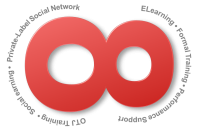In this depressed economy many training departments find themselves forced to deliver results with fewer and fewer resources. There’s a risk of entering into a downward spiral that should be avoided by learning and organizational development leaders. At the same time that training and development budgets are shrinking, employee disengagement is growing, dissatisfaction is brewing, and a growing number of employee surveys are reporting that employees are planning to leave their current jobs; this turnover will lead to even fewer resources to do the job necessary for the organization to succeed. Many organizations are at risk of being left with unengaged employees who reluctantly stay for lack of a more vigorous job market.
“84% of staff are more committed to employers who invest in their training and development.”
-Hays Workplace Series survey
How can your organization avoid this downward spiral and engage its employees in today’s economic climate?
Training, Development and Engagement.
People want to learn and they want to succeed. They also, as adult learners, want to control their learning experiences and they want them to be relevant to their career goals and aspirations. They want their learning to lead them to new successes.
Empower your people so that they stay and remain engaged. Provide them with informal development opportunities they need whenever they need them to perform, wherever they may be, and on whatever device they want to consume them. That’s the new WWW! Put the employee in the driver’s seat and get out of their way.
Today’s social technologies provide the means to accomplish this. Integrating an enterprise social network into your organization and combining it with an LMS gives you the power to deliver training, provide development and coaching resources, and engage with and enable your people to engage with each other.
Karen O’Leonard in her blog “Corporate Spending on Social Learning” did some analysis on the trends in spending on enterprise social networks. She found that “Although spending is fairly low today, we expect these figures to grow considerably in the coming years as companies focus on building their internal learning capabilities.” It’s not a question of if your organization will integrate this new WWW technology; it’s a question of how you can do so before your competition.


 had to rely solely on the effects of their own actions to inform them what to do. Fortunately, most human behavior is learned observationally through modeling: from observing others one forms an idea of how new behaviors are performed, and on later occasions this coded information serves as a guide for action.
- Albert Bandura, 1977
had to rely solely on the effects of their own actions to inform them what to do. Fortunately, most human behavior is learned observationally through modeling: from observing others one forms an idea of how new behaviors are performed, and on later occasions this coded information serves as a guide for action.
- Albert Bandura, 1977